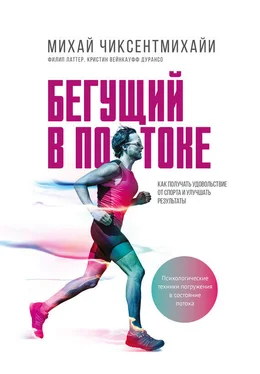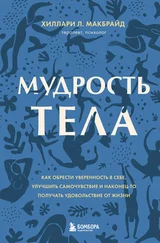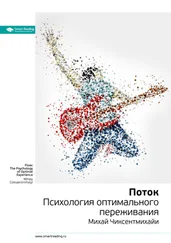Locke E.A., Latham G.P. New directions in goal-setting theory. Current Directions in Psychological Science. 2006, 15(5), 265–268.
Noakes T. Lore of running. 4th ed. Champaign: Human Kinetics, 2002.
Paavolainen L., Häkkinen K., Hämäläinen I., Nummela A., Rusko H. Explosive-strength training improves 5-km running time by improving running power. Journal of Applied Physiology. 1999, 86(5), 1527–1533.
Pfitzinger P., Latter P. Faster road racing: 5K to half marathon . Champaign: Human Kinetics, 2015.
Statistic Brain. New years resolution statistics. 2015. Source: http://www.statisticbrain.com/new-years-resolution-statistics.
Thompson R.W., Kaufman K.A., De Petrillo L.A., Glass C.R., Arnkoff D.B. One year follow-up of mindful sport performance enhancement (MSPE) with archers, golfers, and runners. Journal of Clinical Sport Psychology . 2011, 5(2), 99–116.
Wiese B.S., Freund A.M. Goal progress makes one happy, or does it? Longitudinal findings from the work domain. Journal of Occupational and Organizational Psychology . 2005, 78(2), 287–304. doi: 10.1348/096317905X26714.
Chapter 6
Bond P. Running with the mind of meditation. Trail Runner Magazine. 2008, April. Retrieved from: http://trailrunnermag.com/people/1648-running-with-the-mindof-meditation.
Cianciosi J. Mindful nature walking one step at a time. Yoga Journal Online. 2007. http://www.yogajournal.com/article/practice-section/mindful-nature-walkingone-step-at-a-time.
Csikszentmihalyi M. Flow: The psychology of optimal experience. N.Y.: Harper Collins, 1990.
Dietrich A. Functional neuroanatomy of altered states of consciousness: The transient hypofrontality hypothesis. Consciousness and Cognition: An International Journal . 2003, 12(2), 231–256. doi: 10.1016/S1053-8100(02)00046-6.
Fuller R.A. et al. Psychological benefits of greenspace increase with biodiversity. Biology Letters. 2007, 3(4), 390–394.
Kaplan R. The role of nature in the context of the workplace. Landscape and Urban Planning. 1993, 26(1), 193–201.
Karageorghis C.I., Priest D. Music in the exercise domain: A review and synthesis (Part I). International Review of Sport and Exercise Psychology . 2012, 5(1), 44–66. doi: 10.1080/1750984X.2011.631026.
Koudenburg N., Postmes T., Gordijn E.H. Conversational Flow Promotes Solidarity. Plos ONE . 2013, 8(11), 1–6. doi:10.1371/journal.pone.0078363.
Lutz A., Slagter H.A., Rawlings N.B., Francis A.D., Greischar L.L., Davidson R.J. Mental training enhances attentional stability: Neural and behavioral evidence. The Journal of Neuroscience . 2009, 29(42), 13 418–13 427. doi: 10.1523/JNEUROSCI.1614-09.2009.
Menezes C.B., Bizarro L. Effects of a brief meditation training on negative affect, trait anxiety and concentrated attention. Paidéia . 2015, 25(62), 393–401. doi: 10.1590/1982-43272562201513.
Mipham S. Running with the mind of meditation. N.Y.: Harmony Books. 2012.
Potteiger J.A., Schroeder J.M., Goff K.L. Influence of music on ratings of perceived exertion during 20 minutes of moderate intensity exercise. Perceptual and Motor Skills . 2000, 91(3, Pt 1), 848–854. doi: 10.2466/PMS.91.7.848–854.
Sio U.N., Ormerod T.C. Does incubation enhance problem solving? A meta-analytic review. Psychological Bulletin . 2009, 135(1), 94–120. doi: 10.1037/a0014212.
Strube M.J., Miles M.E., Finch W.H. The social facilitation of a simple task: Field tests of alternative explanations. Personality and Social Psychology Bulletin . 1981, 7(4), 701–707. doi: 10.1177/014616728174030.
Swann C., Keegan R.J., Piggott D., Crust L. A system review of the experience, occurrence, and controllability of flow states in elite sports. Psychology of Sports and Exercise. 2012, 13 ( 6), 807–819.
Swann C., Keegan R., Piggott D., Crust L., Smith M.F. Exploring flow occurrence in elite golf. Athletic Insight: The Online Journal of Sport Psychology . 2012, 4(2), 171–186.
Ulrich R.S. View through a window may influence recovery from surgery. Science . 1984, 224(4647), 420–421.
Wells N., Evans G. Nearby nature: a buffer of life stress among rural children. Environment and Behavior. 2003, 35(3), 311–330.
Wöran B., Arnberger A. Exploring relationships between recreation specialization, restorative environments and mountain hikers’ flow experience. Leisure Sciences . 2012, 34(2), 95–114. doi: 10.1080/01490400.2012.6525.
Chapter 7
Bakker A.B., Oerlemans W., Demerouti E., Slot B.B., Ali D. K.. Flow and performance: A study among talented Dutch soccer players. Psychology of Sport and Exercise . 2011, 12(4), 442–450. doi: 10.1016/j.psychsport.2011.02.003.
Chavez E.J. Flow in sport: A study of college athletes. Imagination, Cognition, and Personality. 2008, 28(1), 69–91.
Dietrich A., Stoll O. Effortless attention, hypofrontality, and perfectionism. In: B. Bruya, B. Bruya (Eds.), Effortless attention: A new perspective in the cognitive science of attention and action . Cambridge: MIT Press, 2010, 159–178.
Engeser S., Rheinberg F. Flow, performance and moderators of challenge-skill balance. Motivation and Emotion. 2008, 32, 158–172.
Hajoglou A., Foster C., de Koning J.J., Lucia A., Kernozek T.W., Porcari J.P. Effect of warm-up on cycle time trial performance. Medicine and Science in Sports and Exercise . 2005, 37(9), 1608–1614. doi: 10.1249/01.mss.0000177589.02381.0a.
Jackson S.A. Athletes in flow: A qualitative investigation of flow states in elite figure skaters. Journal of Applied Sport Psychology , 1992. 4(2), 161–180. doi: 10.1080/10413209208406459.
Jackson S.A. Factors influencing the occurrence of flow state in elite athletes. Journal of Applied Sport Psychology . 1995, 7(2), 138–166. doi: 10.1080/10413209508406962.
Kallenbach S., Zafft C. Attributional retraining: rethinking academic failure to promote success. National College Transition Network: Research to Practice . 2004, 1, 1–3.
Kamphoff C. Personal conversation. 26 August 2015.
Mayo Clinic. Positive thinking: Stop negative self-talk to reduce stress. Healthy Lifestyle: Stress Management. 2014. www.mayoclinic.org/healthy-lifestyle/stress-management/in-depth/positive-thinking/art-20043950.
Rhea M.R., Alvar B.A., Burkett L.N., Ball, S.D. A meta-analysis to determine the dose response for strength development. Med Sci Sports Exerc. 2003, 35(3): 456–464.
Society for Endocrinology. You and your hormones: adrenaline. 2015. www.yourhormones.info/Hormones/Adrenaline.aspx.
Sugiyama T., Inomata K. Qualitative examination of flow experience among top Japanese athletes. Perception and Motor Skills. 2006, 100 (3), 969–982.
Swann C., Keegan R., Piggott D., Crust L., Smith M.F. Exploring flow occurrence in elite golf. Athletic Insight: The Online Journal of Sport Psychology . 2012, 4(2), 171–186.
Triplett N. The dynamogenic factors in pacemaking and competition. American Journal of Psychology. 1898, 9(4), 507–533.
Worringham C.J., Messick D.M. Social facilitation of running: An unobtrusive study. The Journal of Social Psychology . 1983, 121(1), 23–29. doi: 10.1080/00224545.1983.9924462.
Chapter 8
Frank M.G. Current advances in sleep biology . N.Y.: Nova Science, 2009.
Gallagher J. Sleep ‘cleans’ the brain of toxins. BBC News. 2013. www.bbc.com/news/health-24567412.
Kraft T.L., Pressman S.D. Grin and bear it: The influence of manipulated facial expression on the stress response. Psychological Science . 2012, 23(11), 1372–1378. doi: 10.1177/0956797612445312.
Читать дальше
Конец ознакомительного отрывка
Купить книгу







![Данила Кузнецов - Язык кино. Как понимать кино и получать удовольствие от просмотра [litres]](/books/415652/danila-kuznecov-yazyk-kino-kak-ponimat-kino-i-pol-thumb.webp)




